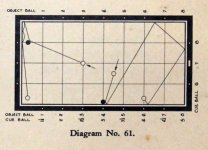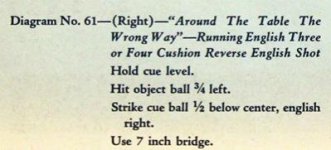Hi, we have our own definitions in our country playing pool and today I had a debate with a guy about English and I came back home in a hurry to google and research, I didn't exactly get the answer for my question yet so I thought to post here.
I'll post what I know, and please do correct me if i'm wrong.
Thanks to "Accu-stats" I have an understanding about English.
<inside english> is when you cut the ball to your right and you put right hand spin on the cueball, thats inside english.
<outside english> is when you cut the ball to your right, and put left hand english, thats outside.
but what exactly is Obverse and reverse English in relation to inside & outside, I mean what are those when you have a cueball & object ball.
for my understanding is, inside english is the same as reverse english, if you have an object ball, I am not speaking of hitting cueball directly to a rail or anything.
and Obverse english is the same as outside English?
Please correct me if i'm wrong on anything of the above.
I'll post what I know, and please do correct me if i'm wrong.
Thanks to "Accu-stats" I have an understanding about English.
<inside english> is when you cut the ball to your right and you put right hand spin on the cueball, thats inside english.
<outside english> is when you cut the ball to your right, and put left hand english, thats outside.
but what exactly is Obverse and reverse English in relation to inside & outside, I mean what are those when you have a cueball & object ball.
for my understanding is, inside english is the same as reverse english, if you have an object ball, I am not speaking of hitting cueball directly to a rail or anything.
and Obverse english is the same as outside English?
Please correct me if i'm wrong on anything of the above.
![CropperCapture[6].png CropperCapture[6].png](https://forums.azbilliards.com/data/attachments/161/161498-5a5adea6033305c91eb8e53e02b47a8c.jpg?hash=WlrepgMzBc)

